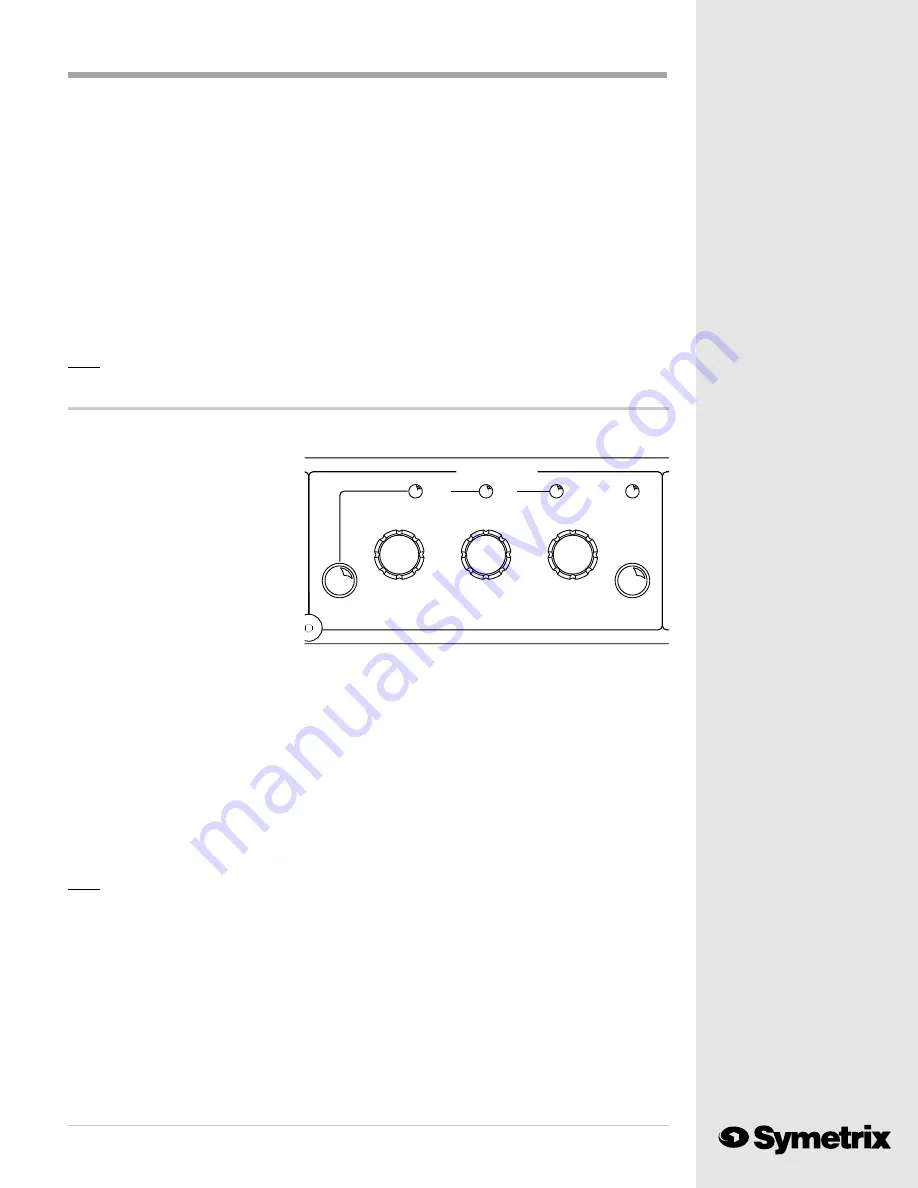
628
9
The Equalizer ...
Since no one remains content to use a standard factory preset, you need to know how to modify
presets and create your own programs from scratch. Well start with the parametric equalizer
section, since EQ is the first thing
which you will want to tweak for
each individual voice.
The 628 provides three overlapping
bands of parametric equalization with
adjustable frequency and bandwidth.
Operating a parametric equalizer is
like opening a safe; you must dial in
the correct three numbers to properly
accomplish the job.
First, make sure that the equalizer is active. Momentarily push the Operate/Bypass button, and the
ACTIVE LED in the PARAMETRIC EQ section will come on. Next, use the Band Select push-
button (left of the FREQUENCY knob) to toggle between LOW, MID and HIGH until the band
which you want to adjust is selected.
The first parameter to adjust is the frequency. This selects the center frequency of equalization cut
or boost. Turn the FREQUENCY knob slowly until you feel one click. Notice that the MASTER
numeric display changes to show the frequency (in kHz) currently selected. You will change the
frequency as you continue to turn the FREQUENCY knob, and the display will flash, indicating that
you are changing an existing program.
Notice that you will not be able to dial in a frequency outside the equalizer band which you have
selected. The bands do overlap, so you can accomplish rather complex equalization tasks.
Note:
If you select the 32 kHz sample rate, the high frequency band tops out at 16 kHz (680 Hz
- 16.0 kHz). The high frequency band ranges between 680 Hz and 20.0 kHz, as indicated
on the front panel, when you use either the 44.1 kHz or the 48 kHz sample rates.
When the center frequency which you want to cut or boost displays in the window, stop turning
the FREQUENCY knob. The display will flash, indicating that you have made a change in fre-
quency. Listen for the equalization change which you have made to the program. If you wish to
accept this change to the preset, push the SAVE button. The MASTER display will show the
flashing letters "Sto" (Store). Push the SAVE button again and the 628 will record the change to
the preset program. This edits the program and permanently records the change. The display will
stop flashing and display the new frequency after you save the change.
Adjustments to the equalization bandwidth (Q) are just as easy. Start by giving the BANDWIDTH
This operation SELECTS and LOADS the preset. When you copy a preset to another
location, you want to SELECT the target location then SAVE the preset which you wish to
copy at the new location.
You will find the 628's "bypass" preset at program "0". The MASTER display will show the letters
"byP" when you dial it in. You may also load the bypass program from the RC-1 Remote Control.
The bypass button is in the lower right corner (Program 0).
The bypass preset comes in handy when you need to erase a program preset from the 628. Let's
say that you want to delete preset #5. First select and load the bypass preset. Next, rotate the
PROGRAM SELECT knob until the MASTER display reads "5". Push the SAVE button. The
MASTER display will read "Sto". Push the SAVE button again. You have now copied the bypass
settings (no processing and flat EQ) into the processing preset #5. You may now start fresh with a
clean slate and build a new processing preset from scratch at preset #5.
Note:
You can find a description of the factory presets and their program numbers in Appendix A.
HIGH
MID
LOW
PARAMETRIC EQ
(dB)
(Oct)
CUT/BOOST
(kHz)
FREQUENCY
BANDWIDTH
(680-20kHZ)
(20-500Hz)
(160-6300Hz)
ACTIVE


























